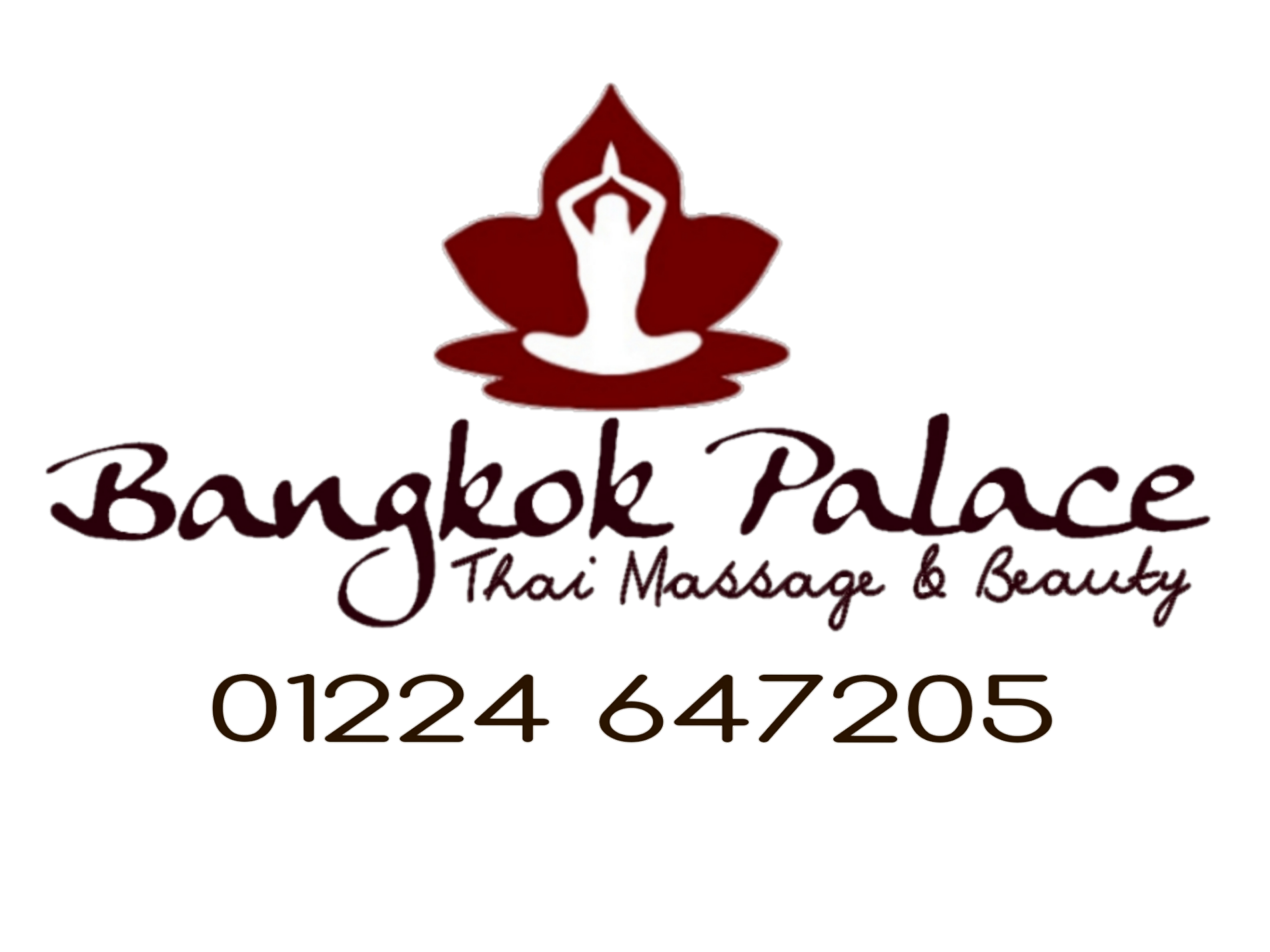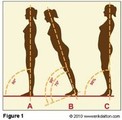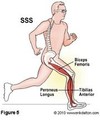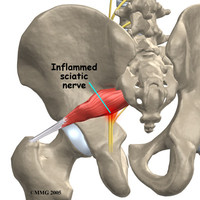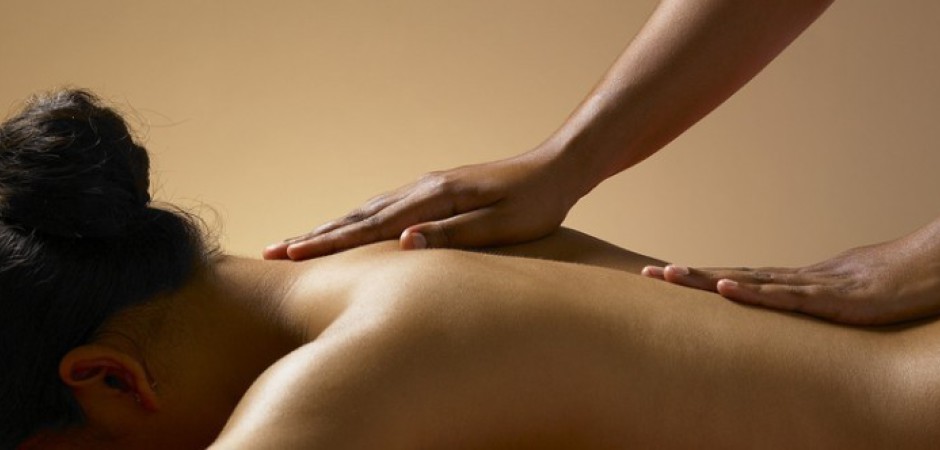

High Heels and Back Pain
From Erik Dalton Myoskeletal Therapy
For over a century, the biomechanical effects of heels in everything from running shoes to stilettos has puzzled researchers and fired controversy. When standing barefoot, the perpendicular line of the straight body column creates a ninety degree angle with the floor (Fig. 1A). On a two-inch heel, were the body a rigid column and forced to tilt forward, the angle would be reduced to seventy degrees, and to fifty-five degrees on a three-inch heel (Fig. 1B) Thus, for the body to maintain an erect position, a whole series of joint adjustments (ankle, knee, hip, spine, head) are required to regain and retain one’s erect stance and equilibrium.
The slope or slant of the heel, rear to front, is called the ‘heel wedge angle’. The higher the heel, the greater the angle. On the bare foot there is no wedge angle. The bottom of the heel is on a level one hundred and eighty degrees, with body weight shared equally between heel and ball. Inside the heeled shoe, the wedge angle shifts body weight forward so that on a low heel, body weight is shared forty percent heel, sixty percent ball; and on a high heel ninety percent ball and ten percent heel.
Under these conditions the step sequence is no longer heel-to-ball- to toes and push-off, as with the bare foot. With heels two or more inches in height, little weight is borne by the heel of the foot causing the push-off phase to arise almost wholly from the ball (Fig. 2). In this reflex adjustment, scores of body parts — bones, ligaments and joints, muscles and tendons — head to foot must instantly change position. If these adjustments are sustained over prolonged periods via habitual use of higher heels, the strains and stresses become chronic, causing or contributing to compensatory strain patterns ascending up the kinetic chain.
In the recent edition of ‘The Journal of Injury, Function and Rehabilitation‘, a research team compared the effects on knee, hip, and ankle joint motions of running barefoot versus modern running shoes. Sixty-eight healthy young adult runners who currently utilize modern running shoes for training were selected for participation. None of the participants had a history of musculoskeletal injury and they each ran an average of 15 miles per week. The experiment was designed so participants ran on a treadmill linked to a motion analysis device. They each engaged in a short treadmill run session with running shoes, and in an identical short session barefoot.
While some manual therapy techniques such as foot and ankle mobilization and structural alignment provide temporary relief from gait-induced distress symptoms (Fig. 3), long-term, they are largely ineffectual in re-establishing natural gait. Why? Because natural gait is biomechanically impossible for any shoe-wearing person. The shoe’s elevated heel shortens the Achilles tendon and tightens calf muscles sometimes leading to conditions such as plantar fasciitis and heel pain (Fig. 4).
The heeled shoe “steals” much of the body’s antigravity propulsive power by weakening the fascial stirrup and leg muscles (Fig. 5). This not only places more stress on them to achieve needed propulsion (loss of ground reaction force), but power must be borrowed from elsewhere — knees, thigh muscles, hips, and trunk. Both tendons, ligaments and muscles are, of course, vital to step propulsion and gait stamina — which may help explain the performance dominance of marathon runners from nations where the barefoot state is common from infancy to adulthood.
Massage for Atrophied Muscles
Massage therapists are specialists in treating the dysfunctions of the musculoskeletal system, and understanding the anatomy of the involved structures is key to providing a successful treatment. People with weak or atrophied muscles often rely on massage therapy to increase strength and restore the body’s operations. There are quite a few conditions that will either cause, or have the potential to cause, muscle atrophy.
The definition of Atrophy, according to Human Anatomy and Physiology (8th Edition) is “reduction in size or wasting away of an organ or cell resulting from disease or lack of use”. Atrophy is also referred to as “muscle wasting”.
Atrophy of a muscle can occur in 2 ways – from disuse or denervation.
Disuse atrophy will occur when a person is unable to use a muscle for any number of reasons. It is very common when a limb has been cast from a break or fracture, or a person has been on bed rest for an extended length of time. Once a person is mobile again, or a cast has been removed, the client should undergo a rehabilitation process designed to challenge and strengthen the involved structures. Assuming that the atrophy was only caused by lack of use, the patient will eventually regain strength and normal size of the muscle.
Denervation atrophy occurs when the nerve supply to a muscle is interrupted and the muscle no longer receives signals or stimulus from the nervous system. This type of atrophy can occur from injury to the central nervous system, as in a spinal cord injury, or in the peripheral nervous system, such as a broken bone which damages surrounding nerve. Damage doesn’t necessarily mean a complete severing of the nerve, in which case nerve tissue is not known to regenerate. Damage will occur in varying degrees of severity, and may be a result of compression (impingement), crushing or partial tearing. If this is the case, with proper care and rehabilitation the injury will heal and muscle strength can be regained.
Atrophied tissue is very fragile, and deep techniques are contraindicated until the condition of the tissue improves. Initially, the primary goal of treatment for atrophied tissue is to increase circulation and to stimulate the nerves – this can be accomplished by gentle dry brushing, followed up by light stimulating techniques such as stroking, effleurage or c-scooping.
Massage therapy in itself cannot increase muscle strength, but in the case of inactivity or lack of exercise due to surgery or illness, massage can assist in a more complete recovery. Massage can provide stretching for atrophied muscles. Massage mimics exercise in the muscles, and muscle tone actually increases in atrophied muscles with regular massage. Combining massage with rehabilitation increases the speed in which recovery can happen.
Source: whymassagetherapy.com
Sitting is “Killing” You
Many of my clients hear me talk about how sitting for extended periods of time is not natural for the human body. Recent research studies have produced data that indicates significant stress on the spine when factors of ergonomics (ie. sitting angle) and length of time are present. At the end of this post is a graphic that I recently discovered. This graphic effectively illustrates the data produced from the recent research findings. I encourage everyone to use this as a starting point toward making changes in your workplace, at home, and your general lifestyle. Granted, today’s typical workplace demands and duties place the expectation on individuals to be seated at a desk for hours on end… however, at the very least, continue reading for suggestions to minimize the effects on your body. Continue reading the rest of this blog entry as the illustration follows my recommendations below.
1) Move around as often as possible.
Staying in a sedentary position for too long places muscle and other soft tissues through conditions that are unnatural for their purposes, thereby causing harm and injury. Scar tissue builds up around the soft tissue and begins a pain/tension cycle that, once chronic, will need to be addressed.
2) Exercise and eat right!!!
Building and maintaining muscle strength and endurance will assist your body in combating the stresses placed on it during prolonged activity. Fueling your body with a healthy diet makes the process that much more efficient and effective.
3) Stay hydrated!
Sure, caffeine may help you wash away your grogginess but it should not take the place of water. In fact, coffee dehydrates. Your body requires hydration for many purposes. Tie in the exercise component as well. Exercise can be energizing and stimulating enough to replace your “need” for that grande, double shot, extra hot americano.
4) Therapeutic maintenance (Schedule a massage therapy session at least once per month)
To help address the continuous collection of stress on your body, place preventative maintenance as a priority. In addition to the above recommendations, schedule time aside once a month for a massage therapy session. For combined physical and mental health, consider Yoga. The options are there, you just have to make it a priority.
Source: jpthermt.com
Massage is Like Getting 8 Hours of Sleep
We often forget to relax, considering, the busy lives we live. We also forget how good relaxing can feel. Many people are under the impression that massage is a luxury, however massage has been an important part of achieving and maintaining wellness for thousands of years. Spending one hour under the hands of an experienced therapist is like getting eight hours of sleep
A good massage activates the parasympathetic nervous response- which slows the heart down, naturally! Skeletal muscles relax, pupils constrict, sweat glands deactivate, and normal digestion occurs. This is the physiological process of relaxing.
The body will rest & digest. Music & sounds can also lower the heartbeat, blood pressure, and breathing rate, and actually change brain waves to slower, alpha and theta frequencies that put a person in a state of calm, heightened awareness, & meditation. Your body releases endorphins, as well as raising the levels of serotonin and dopamine in your brain, which also lead to feelings of calm, relaxation, and elevated mood.
If you put two and two together: Massage + Relaxation = Rest.
Rest is equivalent to sleep, and your body responds in healthy ways.
Sources: massagetherapycenter.wordpress.com, slocomassage.com
Does Massageave to Hurt to Hel
Does Massage Have to Hurt to Help?
Clients and massage therapists often seem to be completely divided on this issue. There are those (both client and therapist) that really like deep work, and think that a massage isn’t effective unless it hurts. Then there are those that don’t like deep tissue massage because it hurts too much. There are some people that have given up on massage because their session was very uncomfortable or because they sustained an injury during massage.
My perspective, or belief, is this: Although some massage techniques may be uncomfortable, the associated pain should NEVER EVER be unbearable. There are many massage techniques to choose from, but even the deeper treatment techniques specific to chronic pain should never cause unbearable pain.
Deep tissue massage is an umbrella term that covers a wide range of techniques. Massage therapists use it as a generic catch-all term when advertising because the general public won’t recognize many of the specific modalities or techniques by their name. There are techniques that are gentle, such as Craniosacral Therapy, as well as techniques that are more aggressive, like Neuromuscular Therapy.
As a student of massage therapy, we are taught that optimal pressure is to work at the “sub-threshold of pain.” What this means is that the level of pressure may be uncomfortable when treating a tender area or trigger point, but the client should still be able to keep the muscle relaxed and not have to tense up. So if you’re using a pain scale where 0 is no pain and 10 is excruciating pain, then the pressure must stay near what is referred to as a “breathable 7” and the importance of communication between the client and therapist is key. The purpose of these treatments is to relieve pain and dysfunction in the muscles and fascia; some discomfort can be expected, but should be no more uncomfortable than the painful problem that’s being treated.
Deep tissue massage is effective because the techniques consist of slower, stronger massage that stimulates deep into the muscles. Deep tissue massage can help break up scar tissue, eliminate adhesions, resolve trigger points and relieve chronic patterns of muscle tension. Focusing on a deeper level of muscle and connective tissue requires the patience of both the therapist and client. Tight muscles need to be coaxed into a relaxed state before very deep strokes can be used. To warm up the muscles, long gliding strokes can be used, and as the pressure slowly becomes deeper, the client’s pain tolerance will increase. After the muscles become supple, the client will be able to withstand more pressure.
An important thing to remember is this: using full force from beginning to end is never good and it will not work out knots and tension. Beginning with too much pressure too fast causes the muscle to contract, doing more harm than good because the body is fighting against the pressure. The best deep tissue techniques “melt” through the skin, layers of fat, and superficial muscles and their connective tissues to get down to, and address, the deeper muscles and their connective tissues. A good rule to follow is: The deeper you go, the slower you go.
A common misconception is the belief that lighter pressure has no benefits. Massage has many wonderful benefits, including the increase in circulation of blood and lymph, inhibition of the stress response promoting the “rest and digest” function, and promotes healing and recovery by assisting with cellular metabolism. To obtain effective pain management, lighter touch with moderate deep work can be essential to those who suffer from such diseases as osteoarthritis, fibromyalgia, diabetic neuropathy, lupus or other autoimmune disease, as well as many more. Soothing and comforting touch can often be much more effective in chronic pain management than deeper work.
To have success with deep tissue massage, you cannot expect that all your issues will be taken care of in one session, the best approach to take when looking to treat chronic muscle tension is to have an ongoing schedule of regular deep tissue massage treatments.
And one last thought… if the massage therapist isn’t listening to you and your needs, please don’t just give up on massage. Find another therapist that will fit the bill, there are many of us out there and we all have our strengths but we cannot possibly be the “it” person for everyone. Also, a good therapist also knows when he or she needs to refer out because they recognize their own limitations.
Sources: empoweringwellnessnow.com , tapestryliferesources.com
Pregnancy Massage – Good for Mom, Good for Baby!
Studies indicate that massage therapy performed during pregnancy can reduce anxiety, decrease symptoms of depression, relieve muscle aches and joint pains, and improve labor outcomes and newborn health.
Massage therapy addresses different needs through varying techniques, one of which is called Swedish Massage, which aims to relax muscle tension and improve lymphatic and blood circulation through mild pressure applied to the muscle groups of the body. Swedish Massage is the recommended prenatal massage method during pregnancy because it addresses many common discomforts associated with the skeletal and circulatory changes brought on by hormone shifts during pregnancy.
Hormone regulation
Studies done in the past 10 years have shown that hormone levels associated with relaxation and stress are significantly altered, leading to mood regulation and improved cardiovascular health, when massage therapy was introduced to women’s prenatal care. In women who received bi-weekly massages for only five weeks, hormones such as norepinephrine and cortisol (“stress hormones”) were reduced and dopamine and serotonin levels were increased (low levels of these hormones are associated with depression). These changes in hormone levels also led to fewer complications during birth and fewer instances of newborn complications, such as low birth weight. The evidence points strongly to maternal and newborn health benefits when therapeutic massage is incorporated into regular prenatal care.
Reduction of swelling
Edema, or swelling of the joints during pregnancy, is often caused by reduced circulation and increased pressure on the major blood vessels by the heavy uterus. Massage helps to stimulate soft tissues to reduce collection of fluids in swollen joints, which also improves the removal of tissue waste, carried by the body’s lymph system.
Improvement of nerve pain
Sciatic nerve pain is experienced by many women in late pregnancy as the uterus rests on muscles of the pelvic floor and lower back. The pressure of the uterus spreads tension to the muscles of the upper and lower leg, causing them to swell and put pressure on nearby nerves. Massage therapy addresses the inflamed nerves by helping to release the tension on nearby muscles. Many women have experienced significant reduction in sciatic nerve pain during pregnancy through regular massage.
Other potential benefits of prenatal massage:
- Reduced back pain
- Reduced joint pain
- Improved circulation
- Reduced edema
- Reduced muscle tension and headaches
- Reduced stress and anxiety
- Improved oxygenation of soft tissues and muscles
- Better sleep
What precautions should be taken when seeking prenatal massage?
As with any therapeutic approach to pregnancy wellness, women should discuss massage with their prenatal care provider. The best way to address the risks of prenatal massage is to be informed and to work together with knowledgeable professionals.
Body position during prenatal massage
Many professionals consider the best position for a pregnant woman during massage is side-lying. Tables that provide a hole in which the uterus can fit may not be reliable and can still apply pressure to the abdomen, or allow the abdomen to dangle, causing uncomfortable stretching of the uterine ligaments. Consult your massage therapist before your first appointment to verify what position they place their clients in during the massage.
Seek an appropriate massage therapist
It is important to seek care from a certified prenatal massage therapist. Certified therapists have received training beyond the national standards for massage therapists and know how to address specific pregnancy needs and sensitive areas of the body.
Be aware of sensitive pressure points
Trained prenatal or pregnancy massage therapists are aware of pressure points on the ankles and wrists that can gently stimulate pelvic muscles, including the uterus. Certified prenatal massage therapists are trained to avoid very specific and intentional pressure to these areas during pregnancy. Any woman who has experienced pre-term contractions or consistent Braxton-Hicks contractions should alert her therapist to that fact so that pressure points can be avoided completely.
Women with the following conditions should speak with a health care provider prior to receiving a massage:
- High risk pregnancy
- Pregnancy induced hypertension (PIH)
- Preeclampsia
- Previous pre-term labor
- Experiencing severe swelling, high blood pressure, or sudden, severe headaches
- Recently gave birth
Incorporating Massage Into Your Prenatal Care
Women can begin massage therapy at any point in their pregnancy – during the first, second, or third trimester. The benefits of massage can improve overall prenatal health for many pregnant women. Along with the guidance and advice of a prenatal care provider, massage therapy can be incorporated into routine prenatal care as an emotional and physical health supplement proven to improve pregnancy outcome, and maternal health. Consult with your midwife or obstetrician before beginning any new therapeutic practice.
Source: Massage Therapy Center
What can you do to help alleviate the pain?
Sure you can down a bottle of pain relievers or drink alcoholic beverages, but these are only temporary solutions to your pain and will harm your performance at work. Massage therapy can provide a healthy alternative with lasting pain relief without leaving your mind feeling foggy.
If you are living with chronic pain such as migraine and tension headaches, stiff neck, and sore shoulders from your desk job, a professional massage therapist can help you work through the pain in just a few treatments. Be aware that a good therapist will also recommend a good stretching regimen and certain exercises for you to do at home between treatments to help you recover faster.
Have you always thought of massage as a luxury you couldn’t afford? Consider the price of having a healthy body that is pain free. How much is that worth to you? Massages come in a range of prices and in a variety of packages, so you’re sure to find the right fit for you. Also some health insurance plans will cover massage for medical reasons; look into your plan to see if you’re already covered for massage therapy.
Does the idea of a full body massage make you feel uncomfortable? Try having a chair massage the first time around to help you find your comfort zone. Chances are you’ll realize there is nothing to be afraid of, and you will go for a full body massage on your next visit.
If you are living with pain caused by your desk job and are looking for a healthy lasting solution to this pain, then look no farther, massage therapy is your answer!
Source: structurabodytherapies.com
How Soon After an Injury Should I Seek Massage Treatment?
This is an important question. So many people that come to see a massage therapist show up after they have had an injury for a while because the injury is not healing. By then the body has developed holding patterns and scar tissue in reaction to the injury. These issues can create more work for your massage therapist who has to help you break up your scar tissue and relax your holding patterns. This can lead to a longer time for your injury to heal.
Holding patterns and scar tissue are the body’s way of protecting itself from further injury. While this can be helpful during your accident to possibly protect you from more traumas, it is important to slowly encourage your body to relax and heal so that you won’t continue to develop additional scar tissue and tighter holding patterns. Massage is one of the best ways to help with this process.
It is important when you sustain a serious muscle injury to see your doctor and find out if you are in need of a prescription for massage. This is especially important in cases of a motor vehicle accident or a serious fall. You can increase your chance for a more speedy recovery from an acute injury if you can get treatment within 24-72 hours.
Specifically targeted massage for an injury helps soft-tissue injuries (such as muscle pulls and strains, tendonitis, ligament sprains, and whiplash) heal faster. Massage reduces spasm, pain, swelling, and formation of excess scar tissue. Massage also breaks up excess scar tissue and adhesions (stuck together tissue) that weaken muscles and contribute to further injury.
Skillful, knowledgeable massage can make the difference between a one-time muscle strain that takes a few weeks to resolve and a painful, limiting, chronically recurring condition… By applying skills to the proper formation of scar tissue, the reduction of edema, the limiting of adhesions, and the improvement of circulation and mobility, massage can turn an irritating muscle tear into a trivial event.
When you injure a muscle or other soft-tissue, small tears occur in the tissue fibers. To heal the tears, your body immediately begins to form scar tissue at the injured site. This scar tissue, however, doesn’t necessarily run parallel to the fibers of the injured tissue, which can lead to excess scar tissue that is weak and prone to further injury. Also, because scar tissue is not elastic, it can restrict the movement of surrounding fibers, again setting you up for further injury.
Massage creates tension and stretch that breaks up excess scar tissue and helps align the new tissue fibers. This process makes the injured site stronger and less prone to new injury. Massage also increases circulation to the injured area, bringing needed nutrients and removing waste products produced in the healing process.
Massage for an injury requires a regular schedule, no less than once a week. In some cases, you will see much faster results with a twice-a-week schedule. For how long? It depends on the nature and extent of the injury, how old it is, and your ability to heal. It also depends on your willingness, when appropriate, to ice the injury, do some exercises or stretches, or identify and eliminate the cause of ongoing injury.
Massage for an injury is not necessarily relaxing and can leave you feeling sore for a day or two. However, it’s not necessary to be in a lot of pain after the massage — that’s too much work — always let your massage therapist know how you felt after your last massage so they can adjust their treatment.
Sources: bellevuemassagetherapy.com, http://pjharrislmp.wordpress.com
Sciatica: Can Massage Help?
Wow, it’s been a while since I’ve written a proper blog post… you know the saying, “life happens” ? Well, life has been happening to me… so many things have happened in the last month and a half - so many ups and downs, lots of worrying, and thankfully some good things as well. It’s been a long and winding road, but everything is getting back to some semblance of normalcy and I now have the time to write my blog again. So here we go!
What is sciatica?
Sciatic nerve pain is known as sciatica. Sciatica presents with what can be described as a nervy pain that occurs in the lower back, buttocks, and/or down the back of the leg. The pain associated with sciatica is varying: it can be sharp or dull, constant or intermittent, isolated in just the buttocks or lower back, or it can cause leg pain that stops at the knee or runs all the way down to the feet.
The sciatic nerve is the longest nerve in the body. It starts in the low back and runs all the way down the back of the leg to the foot. We have a sciatic nerve on each side of our body, but sciatica commonly occurs in only one side.
Sciatic nerve pain can result from sitting in one position too long, muscle spasms, wearing high heels, obesity, slipped discs, osteoarthritis, or pregnancy. The pain is caused by the nerve being compressed or pinched by tight muscles, slipped discs or bone spurs.
The piriformis is a muscle in the buttocks that lays beneath the gluteal muscles. It is a thin muscle that runs from the sacrum diagonally across the buttock to the top of the outer thigh. The sciatic nerve runs just under this muscle. When it becomes tight it compresses the sciatic nerve and causes pain. Tightness in the piriformis is a common cause of sciatica.
If your pain is caused by muscular compression, massage can help it quite a bit. Positional release and trigger point therapy are two methods that work well to loosen the piriformis.
Muscular sciatica can involve all the musculoskeletal symptoms of the leg. People with sciatica also often have their pelvis in a distorted position; one hip is higher than the other, or one hip more forward than the other. This postural distortion places the piriformis muscle in one hip in a shortened position, so it becomes tighter.
Unlike vertebral sciatica, this type of sciatica may not respond well to chiropractic manipulation, but it responds exceptionally well to the soft tissue approach of massage therapy. Massage therapy helps remove waste materials from muscles. Benefits include the “breaking up” muscle spasms and increases the flow of oxygen to the muscles. Massage also lengthens and relaxes muscle groups allowing them to rest. Range of motion and flexibility are also restored.
Sources: http://www.massage-therapy-benefits.net, http://bodytechnician.com,
Where to find us:
Bangkok Palace
Thai Massage, Nails and Beauty
18 Victoria Street
Aberdeen
AB10 1XA
Opening times
Monday-Saturday
9:30am - 8:00pm
Sunday appointment only
(Sunday appointment advance booking is required)
Phone: 01224 647205





